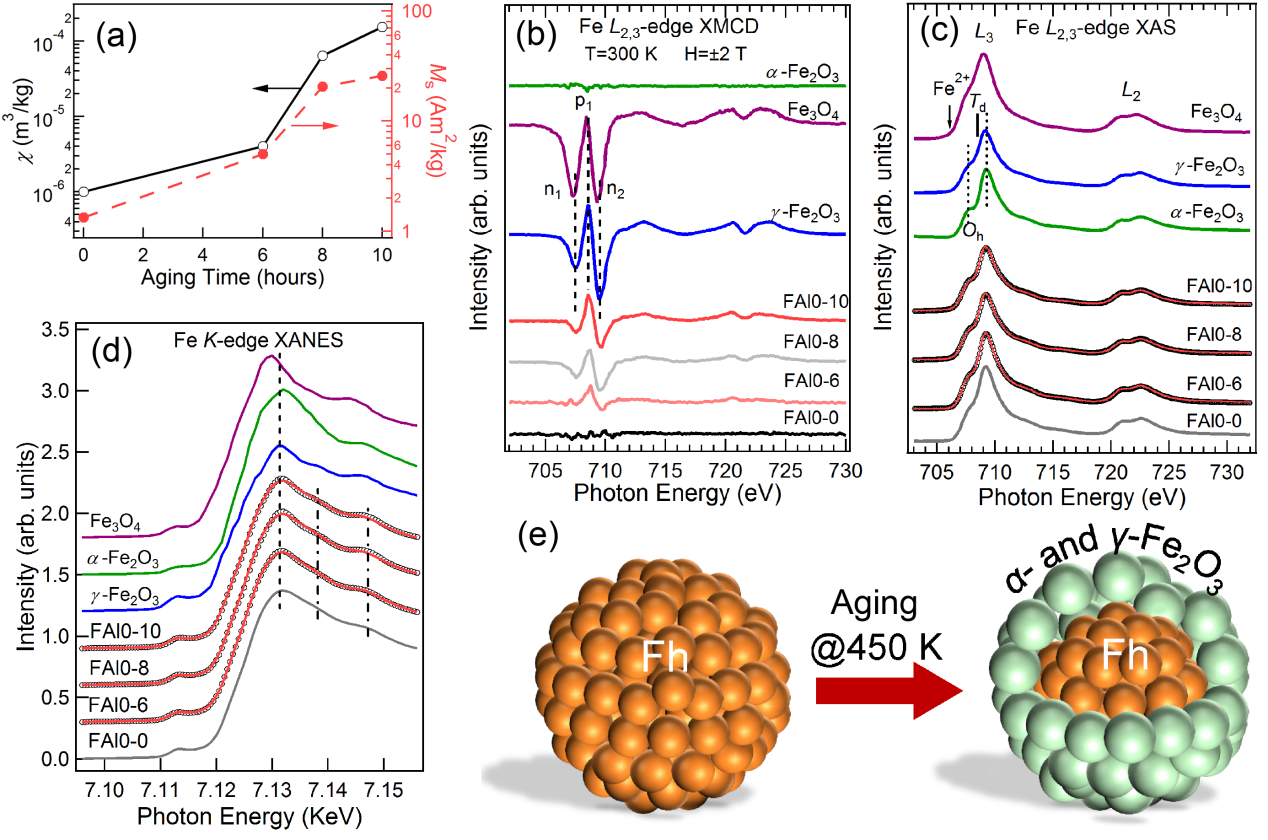Apr 06,2017|By
A research group led by Prof. XIONG Yimin at
Nano-sized ferrihydrite is abundant in natural environments, i.e., soils, sediments, surface waters, acid mine drainage, the surface of Mars, and even in organisms.
It can record mineralization processes in a range of natural environments, which makes it an attractive material to investigate iron chemistry and/or to track the biogeochemical cycling of iron and associated trace elements in natural systems by monitoring its structural evolution upon aging.
One longstanding question is the basic structure and the origin of the magnetism of ferrihydrite. Many specialized techniques require long-range structural order that nano-sized ferrihydrite (typically <10 nm) lacks.
The research group at CHMFL, collaborating with researchers from China, Singapore and Australia, integrates synchrotron-based techniques to explore the chemical structures of 2-line ferrihydrite, and to determine the origin of its magnetism during hydrothermal aging in air.
The initial 2-line ferrihydrite has paramagnetic characteristics, but it gradually becomes superparamagnetic with aging. Both saturation magnetization Ms and magnetic susceptibility increase with aging.
X-ray magnetic circular dichroism (XMCD) and X-ray absorption spectroscopy (XAS), which do not rely on long-range order, are element-, site-/oxidation state, and symmetry-specific, can provide site occupancy and chemical state information, respectively.
XMCD reveals that magnetic enhancement upon aging is attributed to increasing maghemite ( -Fe2O3) concentration instead of a magnetically ordered ferrihydrite as previously reported.
XAS further indicate formation of both maghemite and hematite ( -Fe2O3) with increasing concentrations with longer hydrothermal aging time (cf. Figure c and d).
L-edge and K-edge XAS spectra with different probing depths suggest the formation of a core (ferrihydrite-rich)-shell (with a mixture of both allotropes; -Fe2O3
The proposal provides a more reasonable working model to (at least partially) explain magnetic enhancement of soils under aerobic conditions in natural environment (e.g., soils from the Chinese Loess Plateau), which is caused by maghemite neoformation.
Ferrihydrite with a core-shell structure is magnetically enhanced and has potential to be magnetically extracted from natural environments, and could be used to remove contaminants and toxic pollutants through absorption/coprecipitation in water purification.
The research, which is supported by the National Natural Science Foundation of China and Australian Research Council, has been published in
 |
|
Magnetic characterization and synchrotron-based spectroscopic measurements: (a) Magnetic susceptibility () and saturation magnetization (Ms) at room temperature vs hydrothermal aging time for the studied 2-line ferrihydrite samples. (b) Fe L2,3-edge XMCD spectra, (c) Fe L2,3-edge XAS spectra and (d) Fe |
Attachments Download: